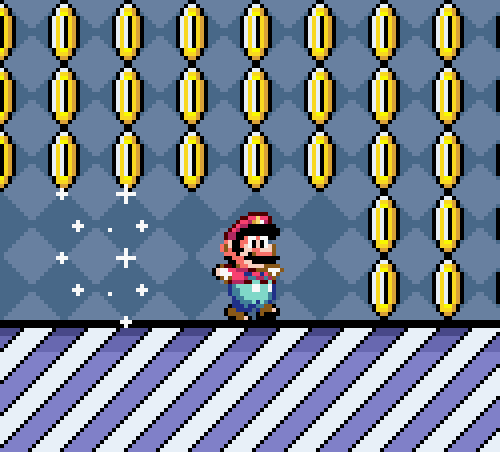
Multicoin Crypto Mining Pool
Multicoin Crypto Mining Pool
The process of mining two cryptocurrencies with the same algorithm on a Multicoin Crypto Mining Pool is consequently known as merge mining. Merge mining enables a miner to focus his hashing power on mining two crypto coins at once. This, in effect, generates higher rates for both currencies. Furthermore, as a miner donates to the total hash rate of both blockchains, he assists in improving the security of both networks.
In other words, the mechanism does not require additional Proof-of-Work (PoW). Instead, miners can utilize their computational power to mine blocks on several chains simultaneously through Auxiliary Proof of Work (AuxPoW).
AuxPoW refers to the work done by a blockchain called the parent chain, which can also be regarded as legitimate work on another chain known as the child or auxiliary chain. The parent and the child chain will often have uneasy variant requirements for solving the Proof-of-Work. The implication is that there can be three different results when miners solve a cryptographic mathematical problem. Miners can either meet the standards of both chains, one of the chains, or neither. Also, the faster the blocks are mined, the more difficult PoW becomes, and the more work is required to discover the following block.
Auxiliary Proof of Work is just the technical vocabulary of Merge mining. It is also the protocol on which Merge mining is based. A more straightforward understanding of the idea involves using the work done on one blockchain (primary) on another blockchain(s) (auxiliary). The auxiliary blockchain must function on the same hash algorithm as the primary blockchain. There is an essential sharing of the computational work done over the primary network with the auxiliary network. This confirms the earlier statement that additional computational effort is for supporting architectural changes in the different networks to accept the PoW done for the parent blockchain is not required to conduct the mechanism.
The primary blockchain does not need any significant alteration for merge mining. The auxiliary blockchain, however, requires the help of a 'hard fork' for its modification. We use forks to include new characteristics in a blockchain. In simple terms, forks present a new set of rules for the cryptocurrency to adhere to.
Security is a significant concern for the auxiliary blockchain due to its operation on a similar hashing power as the primary blockchain. Sometimes, additional blockchains gain more cryptocurrencies due to their connection with the primary blockchain. For example, Namecoin made headway a bit after it merged with BTC. The merge-mining was known to be the first ever. After that followed, Litecoin and Dogecoin were merged publicly in 2014. The outcome was the swift exponential development of Dogecoin being the auxiliary cryptocurrency. The merged mining also resulted in the strengthening of its security network along the way. Therefore, the incentive for merge mining is high. It is because there is an increment in the rewards even though the miners do not need to put in additional hours. Nevertheless, the two networks need extra maintenance work.
Theory Behind Merge Mining
Using BTC and Namecoin as an example. Namecoin (NMC), the auxiliary blockchain, adds what you expect in a standard set of transactions. Regular transactions are still contained in the BTC block, but it possesses an extra transaction with the hash pointing to the NMC block you created.
The next thing to do after setting your blocks is to mine. In mining, you may experience any of these;
- You mine a difficulty-level Bitcoin block.
You finish generating the BTC block and send it to BTC's blockchain. Due to the difficulty level at which you mined the BTC block higher than the difficulty level of Namecoin, you get to mine a Namecoin block. In the end, you receive rewards from both coins.
- You mine a difficulty-level Namecoin block.
You finish setting the Namecoin block by attaching the header and hash of the BTC network. The Namecoin chain then receives this block. It could acknowledge your proof of work which is the extra Bitcoin header and the hash. Your work is your contribution to support merge mining; for that cause, you get your reward in the form of Namecoin.
The idea behind merge mining is to serve as a solution to the atomization of mining power among contending digital currencies and as an assisting mechanism for minor networks. First, however, the parent cryptocurrency must fulfill one crucial requirement to be feasible. That requirement is that it must be possible to attach any data, which is often the yield of a cryptographically secure hash function situated in the input over which the proof of work in the parent is founded.
The primary protocol logic of merged mining in succession requires a very specialized rare Multicoin Crypto Mining Pool named available at “Aux Pow”. The preparation and spec of the data associated with or added in the block header for the parent. For instance, a hash of the header of the child block.
- The execution of the validation logic in the child network, that is, the child network, has to be able to validate the proof of work of the merge-mined blocks received from the parent chain or chains.
The participants of merge mining are needed to work a full node for the corresponding child crypto coin. Miners have a choice not to validate transactions added in blocks or snub transactions at all. This is known as SPV. However, it may be regarded as a spiteful attitude as it may harm the child blockchain. Correspondent to the actual mining process, unverified transactions are set into blocks of any chosen merge-mined crypto coins and the parent coin. The proof of work based on the hash herein regarded as parent cryptocurrencies holds that any alterations to the input, such as the block header and the total data of the block, with significant probability, would annul the proof of work. Hence, introducing data like a hash to the child block header, which is to be mined anywhere in the parent block, unquestioningly associates the child block with the proof of work of the parent block.
Miners then adhere to the usual mining process, searching for reasonable solutions to the proof of work puzzle of the parent block. Each time a participant finds a solution, miners can do these:
- Suppose by chance the solution of the proof of work of the parent block attains the difficulty requirements of the parent coin. In that case, miners will generate a standard parent block adhering to the usual mining procedure.
- Suppose the solution of the parent block attains the difficulty requirements of any child blockchain. In that case, the corresponding child block is legitimate and can be launched in the child's chain.
To ensure nodes in the child blockchain can validate the accurateness of a merge-mined child clock, miners have to involve all data necessary for confirming the proof of work of the parent chain, including the data associating the child to the parent's Proof of Work.
Merge Mining BTC and NMC Where NMC Supports Merged Mining, and BTC Does Not
After a miner sets up a transaction for the two blockchains (BTC and NMC), he puts together the final Namecoin block and hashes it. He also generates a transaction possessing this verified hash in the Bitcoin chain and introduces it in the Bitcoin transaction set at the tree's peak. He then puts the last BTC header with this transaction and sends the work units away.
If the miner solves the BTC difficulty level hash, the BTC block is put together and transferred to the Bitcoin chain. The Namecoin hash doesn't do anything while the Bitcoin chain snubs it.
Also, if a miner solves the Namcoin difficulty level hash, the Namecoin block is set up. The block will contain the NMC's block header, transaction set, BTC block header, and the hash of the remaining transactions in the BTC blockchain. Everything as complicated as it is is sent to the Namecoin network.
The Namecoin network, encouraging merged mining, allows this as PoW because it includes work that must have been carried out after the Namecoin transaction and block header were set up.
Here are three essential details to recall:
- The BTC blockchain does not get trashed up with Namecoin junks because of merged mining. Only a tiny hash is introduced in the transaction tree at most.
- The independence of the two hash chains is preserved. The BTC junk that enters the Namecoin tree is snubbed and only utilized to verify the proof of work.
- Finally, no particular backup is required from BTC.
It cannot be more precise. So many BTC miners may engage in merged mining since it is practically free and grants them a higher profit than mining only BTC. For this cause, the time spent creating a block will be simpler to determine, and their transactions will be more protected against a 51% attack.
Primarily the thought is that the miners put together a Namecoin block and attach a hash. He then introduces that hash into a BTC block. Now when he solves the BTC block at a difficulty level higher than or the same as the difficulty level of Namecoin, it will prove that that quantity of work has been done for the Namecoin block. So the Namecoin protocol has been modified to allow a Bitcoin block that is solved at a difficulty level. The BTC block can only be allowed into the BTC network if it has the same difficulty level as the Bitcoin network.
Since a miner earns money while mining Bitcoins and Namecoins, all miners will eventually do merged mining, and all the blockchain's difficulty levels will finally become equal.
Ultimately, the BTC value mirrors the need for BTCs to make transactions. Therefore, the demand for BTCs and their price tend to rise with an increase in the number of people using BTC for transactions. Equally, the more the price rises, the greater the incentive to mine.
At any point, there is a particular requirement for a Bitcoin-like currency to trade with. That requirement does not rise with an increase in contention. On the contrary, it implies that the transactional need for BTC is the same as that for all significantly related forms of payment. As more currencies are contending to satisfy the same condition, they lessen the needs for the other currencies as they become commonly utilized.
This shows that merge mining does not generally improve the security of the chains to the level that currencies are interchangeable to end users. Currency demands push the price and hence, the reward's value. The increase in demand for any particular currency causes a reduced need for others, reducing the incentive to mine for other cryptocurrencies. In the short term, the overall incentive results from widespread demand for all BTC and like cryptocurrencies.
Conclusion
Namecoin and BTC are examples of merged mining in practice. Many other currencies have been merged mining and are doing just fine. Dogecoin and Litecoin are and will always remain an example.
One thing to note is that the demand for specific cryptocurrencies is falling as it is being satisfied by the need for the contending cryptocurrency. Equally, cryptocurrencies with more outstanding transaction fees create the incentive to mine, diminishing the real incentive. The final effect will be a reduction in mining incentives, a reduction in mining, and ultimately the networks which permitted the mining will lose their security. The logical conclusion is to build strong decentralized Multicoin Crypto Mining Pools.

